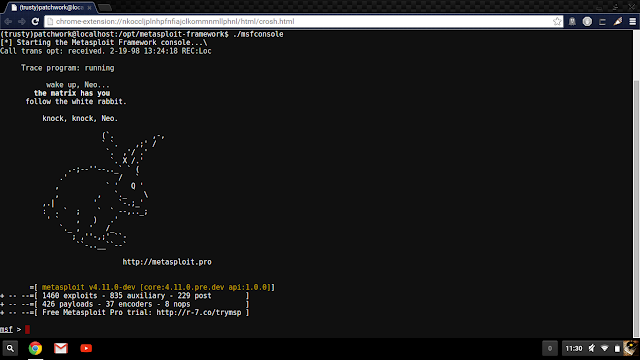crouton is a set of scripts that bundle up into an easy-to-use, Chromium OS-centric chroot generator. Currently Ubuntu and Debian are supported (using debootstrap behind the scenes), but "Chromium OS Debian, Ubuntu, and Probably Other Distros Eventually Chroot Environment" doesn't acronymize as well (crodupodece is admittedly pretty fun to say, though).
"crouton"...an acronym?
It stands for ChRomium Os Universal chrooT envirONment...or something like that. Do capitals really matter if caps-lock has been (mostly) banished, and the keycaps are all lower-case?
Moving on...
Who's this for?
Anyone who wants to run straight Linux on their Chromium OS device, and doesn't care about physical security. You're also better off having some knowledge of Linux tools and the command line in case things go funny, but it's not strictly necessary.
What's a chroot?
Like virtualization, chroots provide the guest OS with their own, segregated file system to run in, allowing applications to run in a different binary environment from the host OS. Unlike virtualization, you are not booting a second OS; instead, the guest OS is running using the Chromium OS system. The benefit to this is that there is zero speed penalty since everything is run natively, and you aren't wasting RAM to boot two OSes at the same time. The downside is that you must be running the correct chroot for your hardware, the software must be compatible with Chromium OS's kernel, and machine resources are inextricably tied between the host Chromium OS and the guest OS. What this means is that while the chroot cannot directly access files outside of its view, it can access all of your hardware devices, including the entire contents of memory. A root exploit in your guest OS will essentially have unfettered access to the rest of Chromium OS.
...but hey, you can run TuxRacer!
Prerequisites
You need a device running Chromium OS that has been switched to developer mode.
For instructions on how to do that, go to this Chromium OS wiki page, click on your device model and follow the steps in the Entering Developer Modesection.
Note that developer mode, in its default configuration, is completely insecure, so don't expect a password in your chroot to keep anyone from your data. crouton does support encrypting chroots, but the encryption is only as strong as the quality of your passphrase. Consider this your warning.
It's also highly recommended that you install the crouton extension, which, when combined with the
extension or xiwitargets, provides much improved integration with Chromium OS.That's it! Surprised?
Usage
crouton is a powerful tool, and there are a lot of features, but basic usage is as simple as possible by design.
If you're just here to use crouton, you can grab the latest release from https://goo.gl/fd3zc. Download it, pop open a shell (Ctrl+Alt+T, type
shell and hit enter), and run sh ~/Downloads/crouton to see the help text. See the "examples" section for some usage examples.If you're modifying crouton, you'll probably want to clone or download the repo and then either run
installer/main.sh directly, or use make to build your very own crouton. You can also download the latest release, cd into the Downloads folder, and run sh crouton -x to extract out the juicy scripts contained within, but you'll be missing build-time stuff like the Makefile.crouton uses the concept of "targets" to decide what to install. While you will have apt-get in your chroot, some targets may need minor hacks to avoid issues when running in the chrooted environment. As such, if you expect to want something that is fulfilled by a target, install that target when you make the chroot and you'll have an easier time. Don't worry if you forget to include a target; you can always update the chroot later and add it. You can see the list of available targets by running
sh ~/Downloads/crouton -t help.Once you've set up your chroot, you can easily enter it using the newly-installed
enter-chroot command, or one of the target-specific start* commands. Ta-da! That was easy.Read more here.
